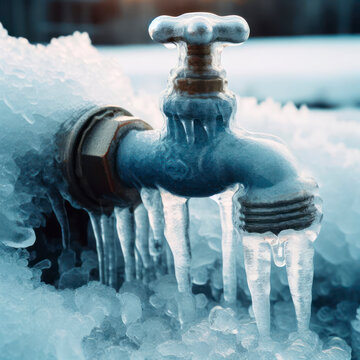Preventing Frozen Pipes in Winter: Professional Strategies
Preventing Frozen Pipes in Winter: Professional Strategies
Blog Article
We have discovered this article on How to prepare your home plumbing for winter weather listed below on the net and reckoned it made good sense to talk about it with you on this page.

Winter can wreak havoc on your plumbing, especially by freezing pipes. Here's exactly how to prevent it from occurring and what to do if it does.
Introduction
As temperatures decrease, the danger of frozen pipelines boosts, potentially resulting in expensive repair work and water damages. Comprehending just how to prevent frozen pipes is vital for home owners in cold environments.
Comprehending Icy Pipes
What causes pipelines to ice up?
Pipelines ice up when exposed to temperatures below 32 ° F (0 ° C) for expanded periods. As water inside the pipelines ices up, it expands, putting pressure on the pipeline walls and potentially creating them to rupture.
Risks and problems
Icy pipes can cause water supply disturbances, building damages, and pricey repair work. Burst pipelines can flood homes and create substantial architectural damages.
Indications of Frozen Pipeline
Determining frozen pipes early can prevent them from bursting.
Exactly how to recognize icy pipes
Seek lowered water flow from taps, uncommon odors or noises from pipelines, and noticeable frost on subjected pipes.
Prevention Tips
Shielding at risk pipelines
Cover pipelines in insulation sleeves or utilize heat tape to secure them from freezing temperature levels. Focus on pipes in unheated or external areas of the home.
Heating techniques
Maintain interior spaces appropriately warmed, specifically locations with pipes. Open up cabinet doors to enable cozy air to distribute around pipes under sinks.
Protecting Outdoor Plumbing
Yard hose pipes and outdoor faucets
Separate and drain pipes yard hoses before winter. Set up frost-proof faucets or cover outside faucets with protected caps.
What to Do If Your Pipelines Freeze
Immediate activities to take
If you suspect icy pipes, keep faucets available to relieve stress as the ice melts. Use a hairdryer or towels taken in hot water to thaw pipelines slowly.
Long-Term Solutions
Architectural modifications
Take into consideration rerouting pipes far from exterior wall surfaces or unheated locations. Include added insulation to attics, cellars, and crawl spaces.
Upgrading insulation
Purchase high-quality insulation for pipelines, attic rooms, and wall surfaces. Appropriate insulation assists preserve regular temperatures and decreases the risk of icy pipelines.
Verdict
Protecting against icy pipes requires positive steps and quick reactions. By recognizing the reasons, signs, and preventive measures, home owners can protect their plumbing throughout winter.
5 Ways to Prevent Frozen Pipes
Drain Outdoor Faucets and Disconnect Hoses
First, close the shut-off valve that controls the flow of water in the pipe to your outdoor faucet. Then, head outside to disconnect and drain your hose and open the outdoor faucet to allow the water to completely drain out of the line. Turn off the faucet when done. Finally, head back to the shut-off valve and drain the remaining water inside the pipe into a bucket or container. Additionally, if you have a home irrigation system, you should consider hiring an expert to clear the system of water each year.
Insulate Pipes
One of the best and most cost-effective methods for preventing frozen water pipes is to wrap your pipes with insulation. This is especially important for areas in your home that aren’t exposed to heat, such as an attic. We suggest using foam sleeves, which can typically be found at your local hardware store.
Keep Heat Running at 65
Your pipes are located inside your walls, and the temperature there is much colder than the rest of the house. To prevent your pipes from freezing, The Insurance Information Institute suggests that you keep your home heated to at least 65 degrees, even when traveling. You may want to invest in smart devices that can keep an eye on the temperature in your home while you’re away.
Leave Water Dripping
Moving water — even a small trickle — can prevent ice from forming inside your pipes. When freezing temps are imminent, start a drip of water from all faucets that serve exposed pipes. Leaving a few faucets running will also help relieve pressure inside the pipes and help prevent a rupture if the water inside freezes.
Open Cupboard Doors
Warm your kitchen and bathroom pipes by opening cupboards and vanities. You should also leave your interior doors ajar to help warm air circulate evenly throughout your home.
:strip_icc()/snow-outdoor-faucet-pipes-4af65d1e5e904fb1aa7bf74071fe5d89.jpg)
As a serious reader about How to prepare your home plumbing for winter weather, I thought sharing that excerpt was really useful. Sharing is nice. Who knows, you might be helping someone out. Kudos for being here. Please come visit our site back soon.
Get Quote Now Report this page